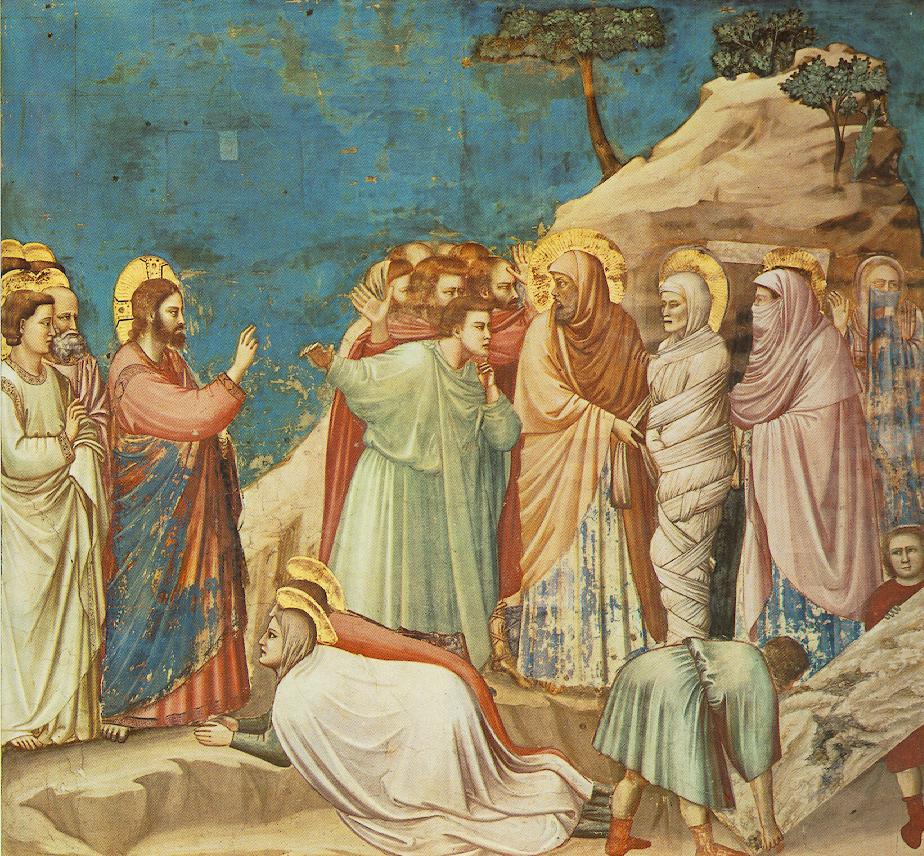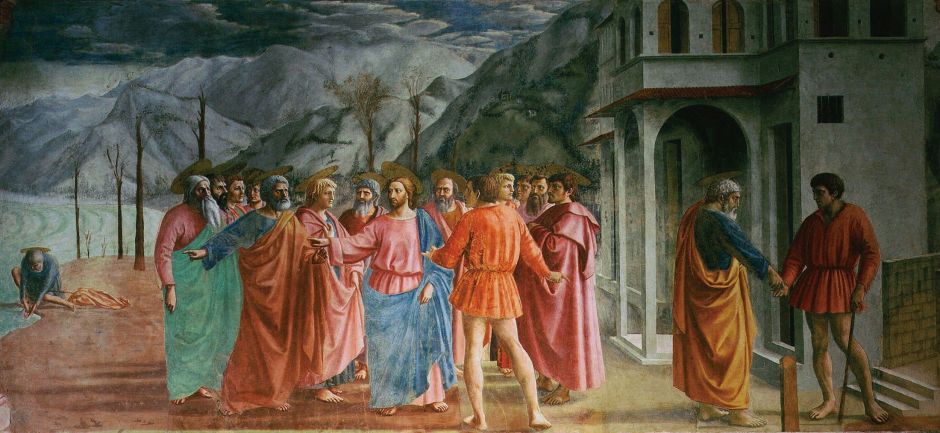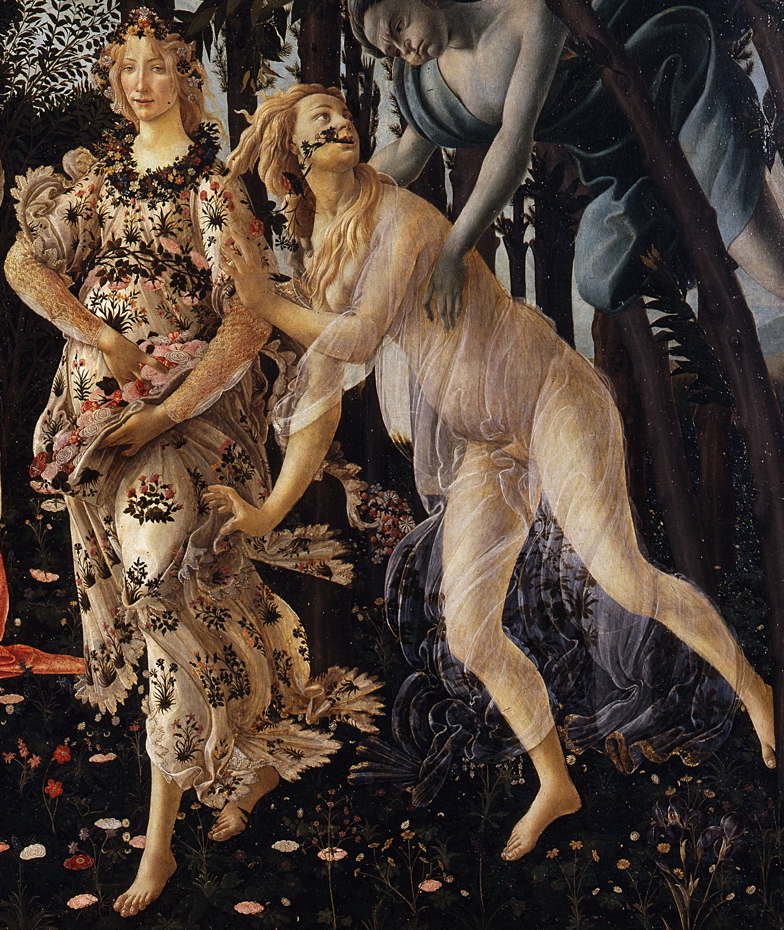Until the advent of oil paints, the depiction of clothing in European paintings was constrained by two factors: the media available, and the clothing to be painted. This article looks at what was achieved before 1500.
Even among the most prosperous, dress in ancient Greece was simple and untailored. The undergarment (chiton) had a cloak (himátion) draped over it in loose folds. Fabrics were confined to wool and linen, the latter being preferred by the more affluent during warmer months. Romans living in classical times were also relatively conservative in their dress. Although the toga was widely worn for formal occasions, everyday clothing more frequently consisted of a long tunic, or for women a woollen mantle over a full-length long-sleeved stole. These most commonly used wool and linen, although exotic fabrics such as patterned silk, gauzes, even cloth of gold, were available to the seriously rich.
Mediaeval dress didn’t change much until after 1000 CE, when tailors started to fit fabrics to the bodies of the nobility and others who could pay for their services. Trousers became steadily more popular for men, particularly those living in colder climates.

This marble relief from a Roman sarcophagus, dated to about 160 CE, shows well the dominant folds in these loose garments. It was this sculpted appearance which formed the model for painting clothing until well into the Renaissance.
Over this period, other than miniatures, paintings were generally frescoes, or created using egg tempera on panels, neither of which proved conducive to the depiction of surface textures in fabrics. Frescoes are large in size, and are painted into specially prepared wet plaster at a brisk pace. Egg tempera dries very quickly and can’t be reworked like oils. It was normally applied painstakingly using fine brushes.

Cimabué’s Maestà was painted in egg tempera between 1280-90, and shows one popular technique used by the masters of the day for the loose folds in garments: finely patterned gilding was used to develop the 3D appearance of folds in what would otherwise be passages of flat colour. In keeping with the reliance on symbols rather than realism, these patterns and the folds themselves follow formulae rather than physics.

Duccio’s small Triptych: Crucifixion and Other Scenes from 1302-08 is less formulaic and uses this technique for folds which appear more natural.

Duccio later used a combination of highlights and shadows, as shown in The Raising of Lazarus from 1310–11.

It was Giotto who led the way in representing folds more realistically, in paintings such as The Raising of Lazarus from about 1305. This is one of his frescoes in the Scrovegni Chapel in Padua, Italy.

The craftsman in France who created The Wilton Diptych in egg tempera at the end of the fourteenth century also used fine gilding to build patterns into fabrics, as shown in this detail. Although it has been suggested that some of these use raised patches of oil paint, I don’t think that is supported by analysis.

In Masaccio’s quest for realism, he took folds further in his fresco of The Tribute Money, a painting he completed in the period 1425-8 in the Brancacci Chapel in Florence. The tax-collector, with his back to the viewer (and a second time at the far right), is wearing a short fitted doublet with long sleeves tapered to the wrist. Its folds are gathered tightly at the waist; those and the folds of the longer biblical robes and mantles are less symmetric and more natural in their hang.

Folds are in abundance in Benozzo Gozzoli’s The Dance of Salome (1461-62), although he was unable to persuade the tempera to tell the difference in surface texture between woollen garments and the armour of the executioner at the left.
It took the skills of Botticelli, at the end of the fifteenth century, to render the weight and surface texture of fabrics, in his masterpiece Primavera, in about 1482.

Here, as shown in the detail below, Botticelli makes clear distinction between the diaphanous folds of Chlora’s robes, the patterned dress of Flora, and heavyweight wollen cloth on Zephyrus at the far right.

To Botticelli’s masterpiece I add one final painting, the earliest of Leonardo da Vinci’s own paintings to have survived. Although this does use oil paints as well as egg tempera, it demonstrates what was already coming in the new medium.

Leonardo’s Annunciation, painted in oil and tempera on a poplar panel, is thought to date from around 1473-75, a few years before Primavera.

The Virgin Mary is sat reading, as is conventional, her book shown in detail down to lines of its text, and the lectern is draped in a diaphanous fabric clearly less substantial than the heavier cloth of her flowing mantle.

The Archangel Gabriel is seen in profile, holding the usual white lily, and the folds in his clothing, the flowers, and surrounds are all meticulous, and becoming real.
Reference
Anne Hollander (2002), Fabric of Vision, Dress and Drapery in Painting, National Gallery and Yale UP. ISBN 1 85709 907 9.

